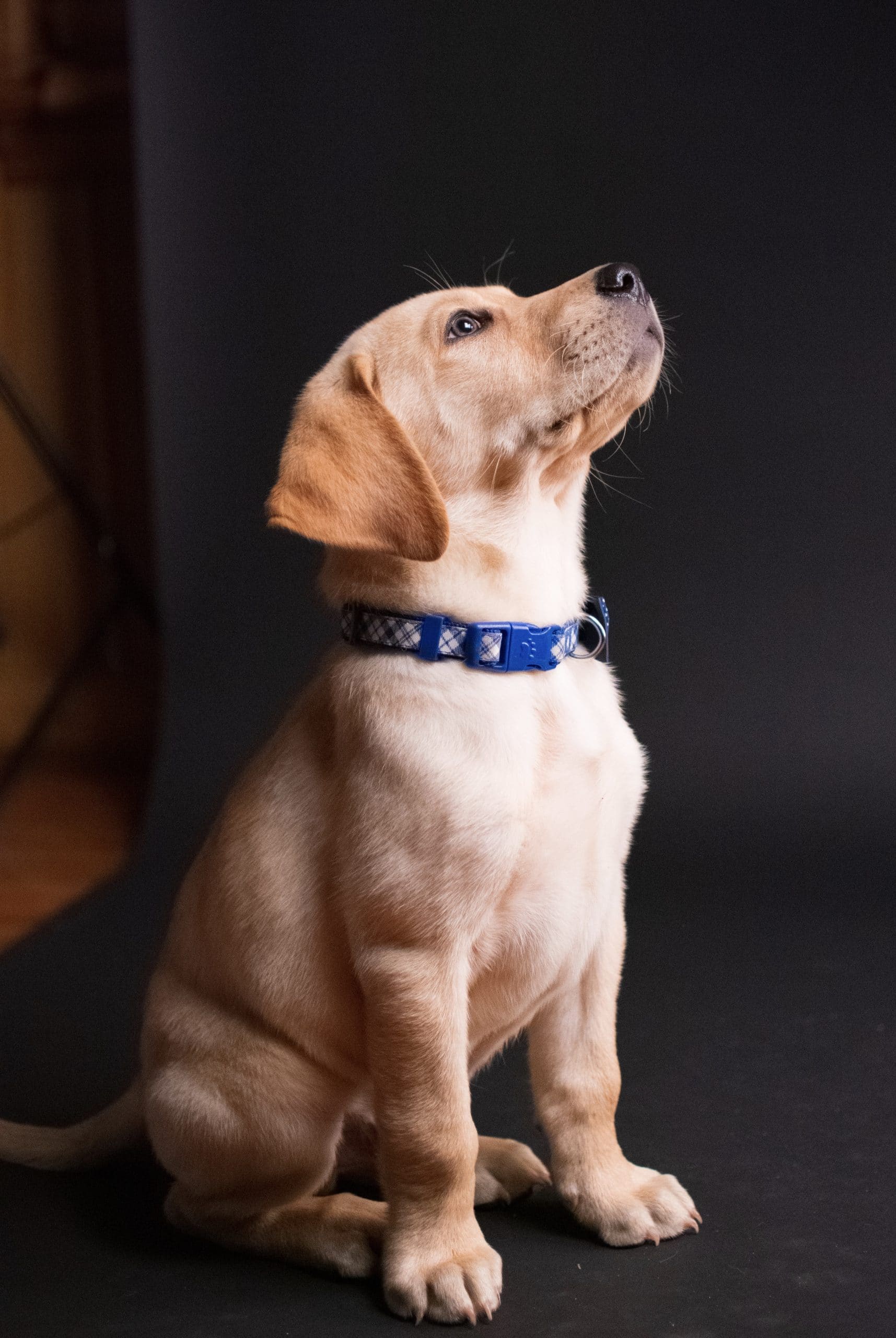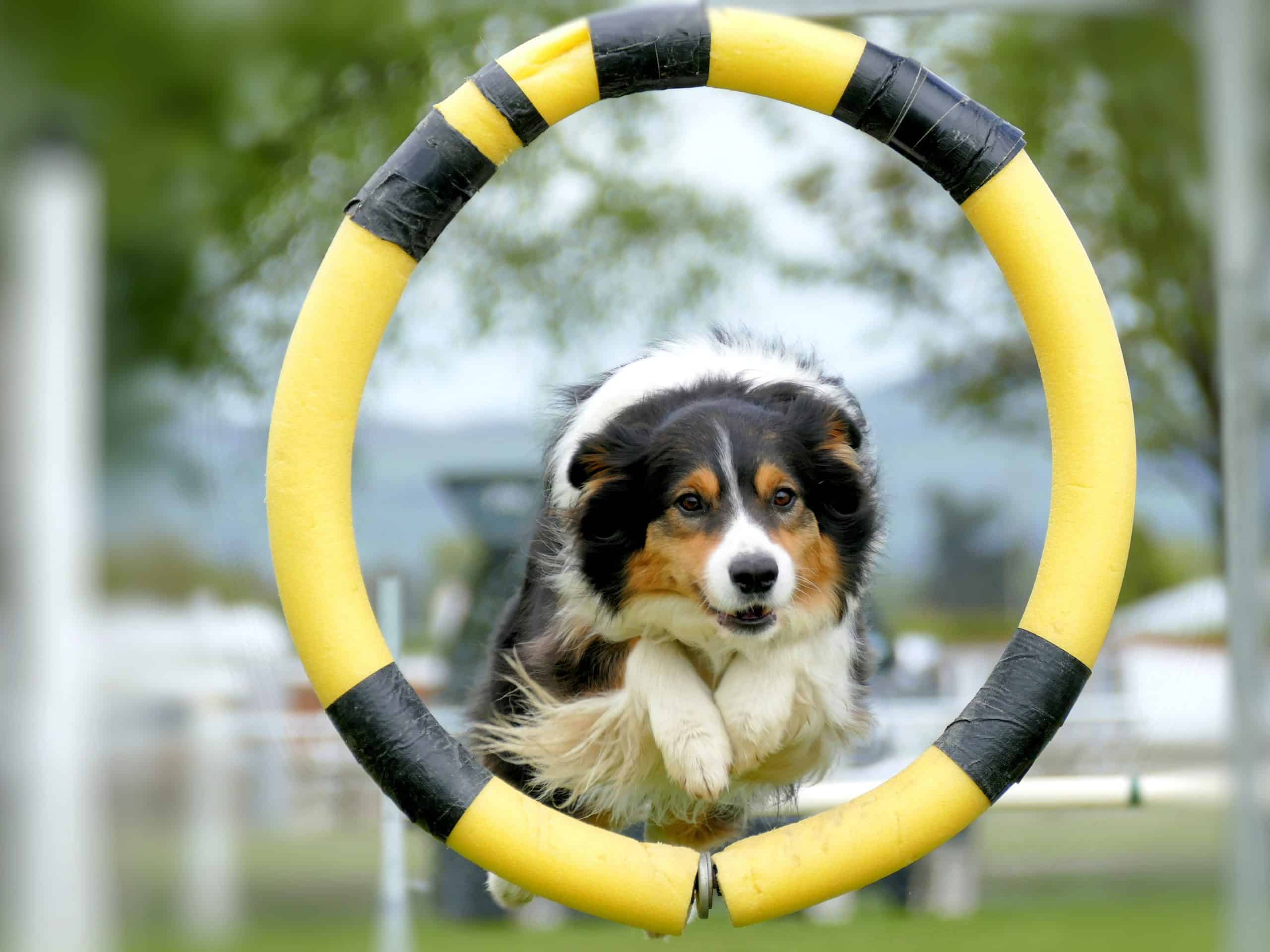If you've ever struggled with training your furry friend, you're not alone. But don't worry, there's a solution that's both effective and enjoyable for both you and your dog: positive reinforcement training. By focusing on rewarding desired behaviors rather than punishing unwanted ones, positive reinforcement training is not only a highly effective way to teach your dog obedience, but also strengthens the bond between you and your pet. In this article, we'll explore the techniques and benefits of positive reinforcement training, helping you unlock the key to a well-behaved and happy dog.

This image is property of images.unsplash.com.
The Basics of Positive Reinforcement Training
Positive reinforcement training is a highly effective and humane approach to training your dog. It focuses on rewarding desired behaviors rather than punishing unwanted behaviors. This method of training has gained popularity in recent years due to its positive results and the bond it creates between dogs and their owners.
Defining Positive Reinforcement Training
Positive reinforcement training involves using rewards to encourage and reinforce good behavior in dogs. The basic idea is to reward your dog for doing something correctly, which increases the likelihood that the behavior will be repeated in the future. This type of training relies on the principles of operant conditioning, where behaviors are shaped by consequences.
The Science Behind Positive Reinforcement
Positive reinforcement training is based on the principle that animals, including dogs, are more likely to repeat behaviors that are followed by rewards. When a dog performs a desired behavior, such as sitting or coming when called, they are rewarded with something they find positive, such as treats, praise, or playtime. These rewards release dopamine, a feel-good hormone in the brain, making the dog associate the behavior with a positive experience.
Key Principles of Positive Reinforcement Training
There are several key principles to keep in mind when using positive reinforcement training with your dog:
-
Timing: It is important to reward your dog immediately after they perform the desired behavior. This helps them make a clear connection between the behavior and the reward.
-
Consistency: Consistency is key in positive reinforcement training. It's important to reward the behavior every time your dog does it correctly, and not reward it when they don't. Dogs learn through repetition and consistency.
-
Clear Communication: Dogs respond best to clear and consistent cues. Use simple and specific commands to communicate what behavior you are expecting from your dog. This helps them understand and respond to your instructions better.
Benefits of Positive Reinforcement Training
Positive reinforcement training offers numerous benefits to both dogs and their owners. It not only helps in shaping good behavior but also strengthens the bond between you and your furry friend.
Builds a Strong Bond
Positive reinforcement training creates a positive and enjoyable experience for your dog, which helps build a strong bond between you and your pet. By rewarding desired behaviors, you are reinforcing the idea that listening to you and engaging in positive behaviors leads to positive outcomes. This mutual trust and respect contribute to a stronger and healthier relationship.
Promotes Good Behavior
Positive reinforcement training is highly effective in teaching dogs good behavior. By rewarding the behaviors you want to see more often, such as sitting, staying, or coming when called, you are encouraging your dog to engage in those behaviors. This makes it more likely that they will choose to behave well in various situations.
Increases Confidence and Trust
When dogs are consistently rewarded for their good behavior, they become more confident and trusting. They learn to associate their actions with positive outcomes, which boosts their self-assurance. This can be particularly beneficial for dogs that are naturally shy or fearful, as positive reinforcement helps to build their confidence in new situations.
Reduces Fear and Anxiety
Positive reinforcement training techniques focus on rewarding desired behaviors rather than punishing unwanted behaviors, which reduces the fear and anxiety that can be associated with traditional punishment-based training methods. Dogs are more likely to feel safe and comfortable in their environment when they are motivated by rewards and positive experiences.
Improves Focus and Attention
Positive reinforcement training helps improve your dog's focus and attention. By rewarding them for paying attention to you and following your commands, you are teaching them to concentrate on you and your instructions. This is particularly helpful in distracting environments where your dog needs to be able to tune out distractions and focus on you.
Choosing the Right Rewards
Choosing the right rewards for your dog is essential in positive reinforcement training. By understanding what motivates your dog and finding the most effective reward, you can maximize the effectiveness of your training sessions.
Understanding Motivation and Rewards
Different dogs are motivated by different things, so it's important to understand what motivates your dog. For some dogs, food treats are the ultimate reward, while others may prefer praise, playtime, or a favorite toy. Experiment with different rewards to see what your dog responds to best.
Types of Rewards for Dogs
There are various types of rewards you can use during positive reinforcement training:
-
Food treats: Most dogs are highly motivated by food and treats. Small, soft, and easily consumable treats are often the most convenient and effective.
-
Verbal praise: Dogs thrive on praise and attention from their owners. Use an enthusiastic and affectionate tone of voice to let your dog know they are doing a great job.
-
Play and toys: Many dogs love to play and interact with toys. Use their favorite toy as a reward for good behavior, or engage in a game of fetch or tug-of-war as a way to reinforce positive behaviors.
-
Physical affection: Dogs are social animals and often respond well to physical affection, such as petting, belly rubs, or gentle scratches behind the ears. Show your dog love and affection as a reward for their good behavior.
Finding the Most Effective Reward for Your Dog
Finding the most effective reward for your dog may require some trial and error. Observe your dog's reactions and adjust your rewards accordingly. Some dogs may be more food motivated, while others may respond better to playtime or praise. By finding the right reward, you can enhance your dog's motivation and optimize their training experience.
Using Positive Reinforcement in Basic Training
Positive reinforcement can be applied to various aspects of basic dog training. Whether you're teaching your dog basic commands, dealing with common training challenges, or addressing specific behaviors, positive reinforcement techniques can help set your dog up for success.
Establishing Clear Communication
Clear communication is essential in any training program. When using positive reinforcement, it's important to establish clear and consistent cues for your dog. Use simple and distinct commands, such as "sit," "stay," "come," and "leave it," to ensure your dog understands what you're asking of them. Use a consistent tone of voice and body language to reinforce your commands.
Teaching the Four Basic Commands
The four basic commands every dog should learn are:
-
Sit: Teaching your dog to sit is a fundamental command that sets the stage for obedience training. Hold a treat above your dog's head and slowly move it back, causing their nose to move upward. As their head goes up, their bottom will automatically go down into a sitting position. Reward them with the treat and praise.
-
Stay: Teaching your dog to stay is important for their safety and control. Start by having your dog sit. Hold your hand up in front of their face, palm toward them, and say "stay." Take a small step back and reward your dog if they remain in place. Gradually increase the distance and duration of the stay with practice.
-
Come: Teaching your dog to come when called is essential for their safety and for off-leash control. Begin in a quiet and familiar environment. Crouch down, open your arms, and happily call your dog's name followed by "come." When they come to you, reward them with praise and treats. Gradually practice this command in different environments and with distractions.
-
Leave it: Teaching your dog to "leave it" is important for their safety and to prevent them from picking up items they shouldn't. Show your dog a treat in your closed hand and say "leave it." Wait for them to stop trying to get the treat, then reward them with a different treat from your other hand. Repeat this process, gradually adding more enticing items to leave.
Dealing with Common Training Challenges
Positive reinforcement can help address common training challenges, such as:
-
Jumping: If your dog jumps on people, teach them an alternative behavior, such as sitting or offering a paw, and reward them for that instead. Ignore or turn away from your dog when they jump, then immediately reward them for good behavior.
-
Barking: For excessive barking, teach your dog the "quiet" command. Wait for a moment of silence, then reward them with treats and praise. Gradually increase the duration of silence required before rewarding.
-
Pulling on the leash: If your dog pulls on the leash during walks, stop walking when they pull and wait for them to come back to your side. Reward them with treats and praise when they are walking calmly by your side.
By using positive reinforcement techniques and focusing on rewarding desirable behaviors, you can overcome these common training challenges with patience and consistency.

This image is property of images.unsplash.com.
Positive Reinforcement Techniques for Specific Behaviors
Positive reinforcement techniques can be applied to address specific behaviors and training goals. Below are some examples of how positive reinforcement can be used for specific behaviors:
House Training and Potty Training
House training and potty training can be successfully achieved through positive reinforcement. When your dog eliminates in the appropriate spot, reward them with treats, praise, and some playtime. Establish a regular schedule for toileting and observe your dog's behavior for signs that they need to go outside, such as sniffing or circling. Consistency, positive rewards, and patience are key to effective house training.
Leash Walking and Heel Training
Leash walking and heel training are important skills for a well-behaved dog. When your dog walks calmly on a leash without pulling, reward them with treats and praise. Use positive reinforcement to reinforce your dog's focus on you during walks, and reward them when they maintain a loose leash.
Crate Training and Separation Anxiety
Crate training can be a positive experience for your dog when done correctly. Use positive reinforcement to encourage your dog to willingly enter and stay in their crate. Reward them with treats and praise when they go inside and calmly remain there. Gradually increase the duration of crate time, always associating it with positive experiences.
For dogs experiencing separation anxiety, positive reinforcement can help alleviate their stress. Use treats and verbal praise before leaving and upon returning to help your dog associate your departures and arrivals with positive outcomes.
Socialization and Fearful Behaviors
Positive reinforcement training is invaluable for socialization and managing fearful behaviors in dogs. Reward your dog with treats and praise when they are calm and confident in new environments or around new people and animals. Gradually expose them to new experiences at their own pace, rewarding them for positive reactions and helping them build a positive association with those situations.
Clicker Training: Enhancing Positive Reinforcement
Clicker training is a specific technique that enhances the effectiveness of positive reinforcement. It involves using a handheld clicker device that makes a distinct clicking sound to mark the desired behavior.
Introduction to Clicker Training
Clicker training works by associating the sound of the clicker with a reward. The click signals to your dog that they have performed the correct behavior and that a reward is coming. This allows for precise timing and clear communication between you and your dog.
Benefits of Clicker Training
Clicker training offers several benefits:
-
Clarity and precision: The clicker sound provides instant feedback to your dog, clearly marking the correct behavior. This helps your dog understand exactly which action is being rewarded.
-
Consistency: The clicker sound is consistent and does not vary with emotions or tone of voice. This helps maintain consistency in training and avoids confusion for your dog.
-
Objectivity: The clicker acts as a neutral stimulus, making it easier for your dog to focus on the action being rewarded rather than the person giving the command.
-
Versatility: Clicker training can be used for a wide range of behaviors and training goals, including basic obedience, agility, and tricks.
Step-by-Step Guide to Clicker Training
To start clicker training, follow these steps:
-
Charge the clicker: Associate the clicker sound with rewards by repeatedly clicking and immediately giving your dog a treat. Do this several times until your dog makes a clear connection between the click and the treat.
-
Choose a behavior: Select a desired behavior you want to train and have treats readily available.
-
Capture the behavior: Wait for your dog to perform the desired behavior naturally. As soon as they do, click and immediately reward them with a treat.
-
Repeat and reinforce: Continue clicking and rewarding each time your dog performs the desired behavior. This will strengthen the association between the behavior and the reward.
-
Add the cue: Once your dog consistently performs the behavior, add a verbal cue (such as "sit" or "shake") just before they do the behavior. Click and reward as usual. Eventually, your dog will learn to associate the cue with the behavior.
Clicker training requires practice and consistency, but it can be a highly effective tool to enhance positive reinforcement training.

This image is property of images.unsplash.com.
Avoiding Punishment and Negative Reinforcement
Positive reinforcement training focuses on rewarding desired behaviors rather than punishing unwanted behaviors. By avoiding punishment and negative reinforcement, you create a positive and trusting training environment for your dog.
The Risks and Consequences of Punishment
Using punishment-based training methods can have negative consequences. It can lead to fear, anxiety, aggression, and reduced trust between you and your dog. Dogs that are punished may become hesitant or even unwilling to engage in training, which hinders their learning and can damage your relationship.
Why Positive Reinforcement is a Better Alternative
Positive reinforcement training offers a better alternative to punishment-based methods. It focuses on rewarding desired behaviors, which motivates your dog to make positive choices and learn new behaviors willingly. It creates a training environment based on trust, respect, and cooperation.
Rewards vs. Punishments in Training
Using rewards instead of punishments in training has several advantages:
-
Motivation and engagement: Dogs are more motivated to learn and engage in training sessions when they are rewarded for their efforts. Rewards create a positive association with training, making it enjoyable for your dog.
-
Clear communication: Rewards provide clear and immediate feedback to your dog, helping them understand exactly what behavior is being reinforced. They learn faster and are more likely to repeat the desired behavior.
-
Strong bond and trust: Positive reinforcement training strengthens the bond between you and your dog. It builds trust and enhances your relationship, as your dog learns to associate you with positive experiences.
Using Positive Reinforcement for Obedience Training
Positive reinforcement can be used for more advanced obedience training, teaching complex commands, and even participating in competitive dog sports.
Advanced Training Techniques with Positive Reinforcement
As your dog progresses in their training, you can incorporate more advanced techniques and commands. These may include off-leash obedience, distance commands, and advanced tricks. By using positive reinforcement, you can continue to motivate and reward your dog for their achievements.
Teaching Complex Commands and Tricks
Positive reinforcement training is highly effective for teaching complex commands and tricks. Break down the behavior into smaller steps and reward your dog for each successful completion. Gradually increase the difficulty and reinforce the behavior until your dog can perform the full command or trick.
Using Positive Reinforcement in Competitive Dog Sports
Positive reinforcement training is used widely in competitive dog sports, such as obedience trials, agility, and flyball. The high level of precision and control required in these sports can be achieved through positive reinforcement techniques. Reward your dog for correct responses, and gradually shape their behavior to meet the specific requirements of each sport.
Understanding the Role of Timing and Consistency
Timing and consistency are crucial factors in positive reinforcement training.
Timing is Key: Immediate Rewards and Feedback
Timing is essential in positive reinforcement training. Rewards should be given immediately after your dog performs the desired behavior, so they can make the connection between the behavior and the reward. Delayed rewards may confuse your dog and hinder their understanding of what they are being rewarded for.
Similarly, feedback and redirection should be provided immediately for unwanted behaviors. This helps your dog understand that the behavior is not desirable and encourages them to switch to a more appropriate behavior.
Consistency in Training: Setting Rules and Boundaries
Consistency is key to successful training. Dogs learn through repetition and consistency, so it's important to apply the rules and boundaries consistently. Use consistent commands, rewards, and consequences to help your dog understand what behavior is expected of them. Consistency in training ensures that your dog understands the rules and can reliably perform the desired behaviors in various situations.
Seeking Professional Help: Positive Reinforcement Trainers
While positive reinforcement training can be effectively implemented by owners, there are instances where seeking professional help can be beneficial.
The Importance of Professional Guidance
Professional positive reinforcement trainers have extensive experience and knowledge in training dogs using positive methods. They can provide guidance, personalized training plans, and address specific training challenges you may be facing. A professional trainer can also help you refine your training techniques and ensure the best possible outcomes for you and your dog.
Finding a Qualified Positive Reinforcement Trainer
When looking for a positive reinforcement trainer, consider the following:
-
Credentials and experience: Look for trainers who have received certifications or have extensive experience in positive reinforcement training methods. This ensures they have the necessary knowledge and skills to help you and your dog.
-
Positive reviews and referrals: Seek recommendations from friends, family, or your veterinarian who have had positive experiences with trainers. Read online reviews to gauge the satisfaction of previous clients.
-
Training methods and philosophy: Discuss the trainer's training methods and philosophy to ensure they align with your values and goals. Ask about their approach to positive reinforcement training and how they address specific training challenges.
Training Programs and Classes
Many positive reinforcement trainers offer training programs and classes for dogs of all ages and skill levels. These programs may cover basic obedience, socialization, behavior modification, or specific skills like agility or therapy dog training. Joining a training program or class can provide structure, guidance, and opportunities for socialization for your dog.
In conclusion, positive reinforcement training is a humane and effective approach to training your dog. By rewarding desired behaviors, you can build a strong bond with your pet, promote good behavior, increase confidence and trust, reduce fear and anxiety, and improve focus and attention. Through clear communication, choosing the right rewards, and consistency in training, you can shape your dog into a well-behaved and happy companion. Remember, positive reinforcement training is a lifelong journey that requires patience, understanding, and a willingness to learn and adapt. Seek professional help when needed, and always prioritize the well-being and happiness of your furry friend.


